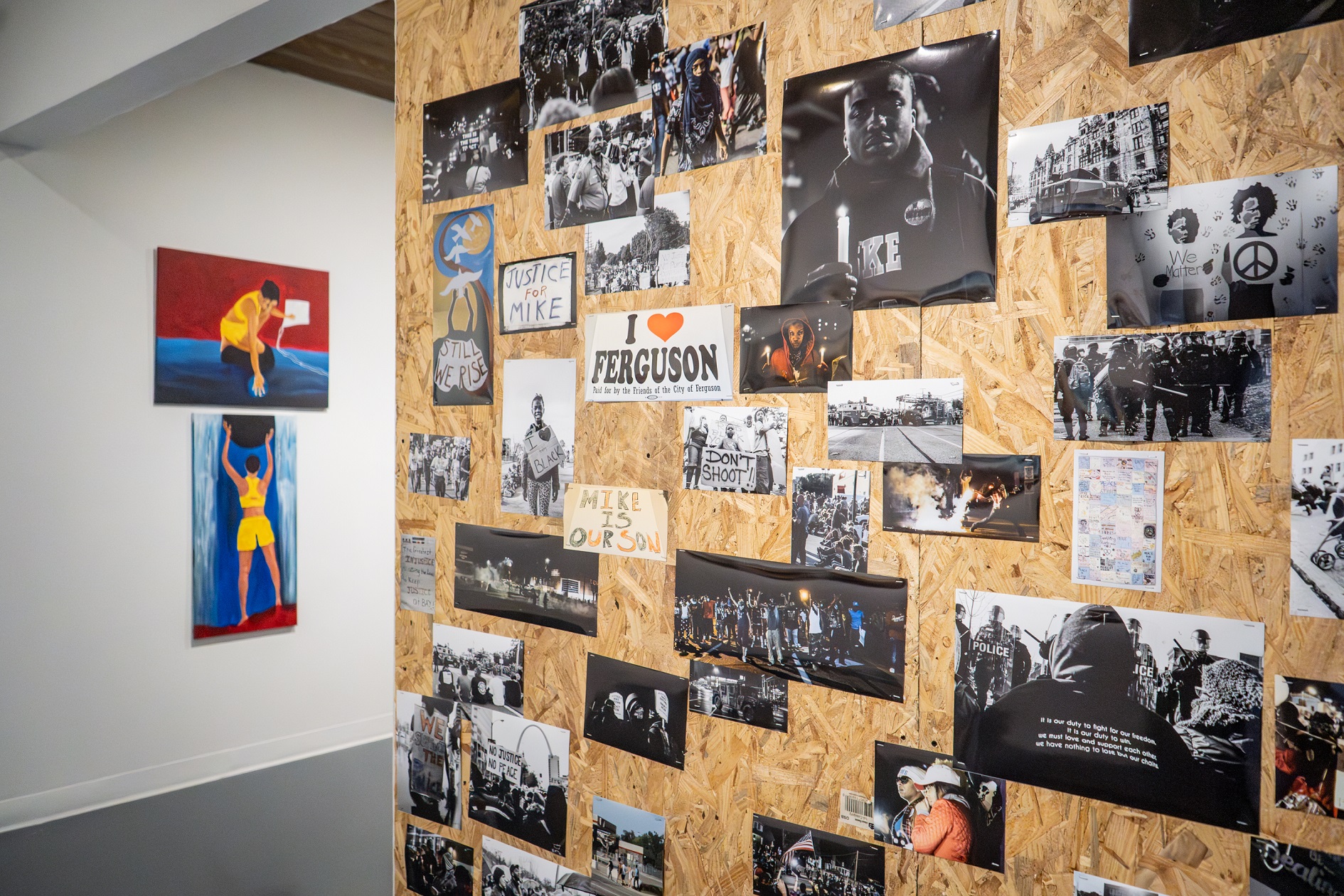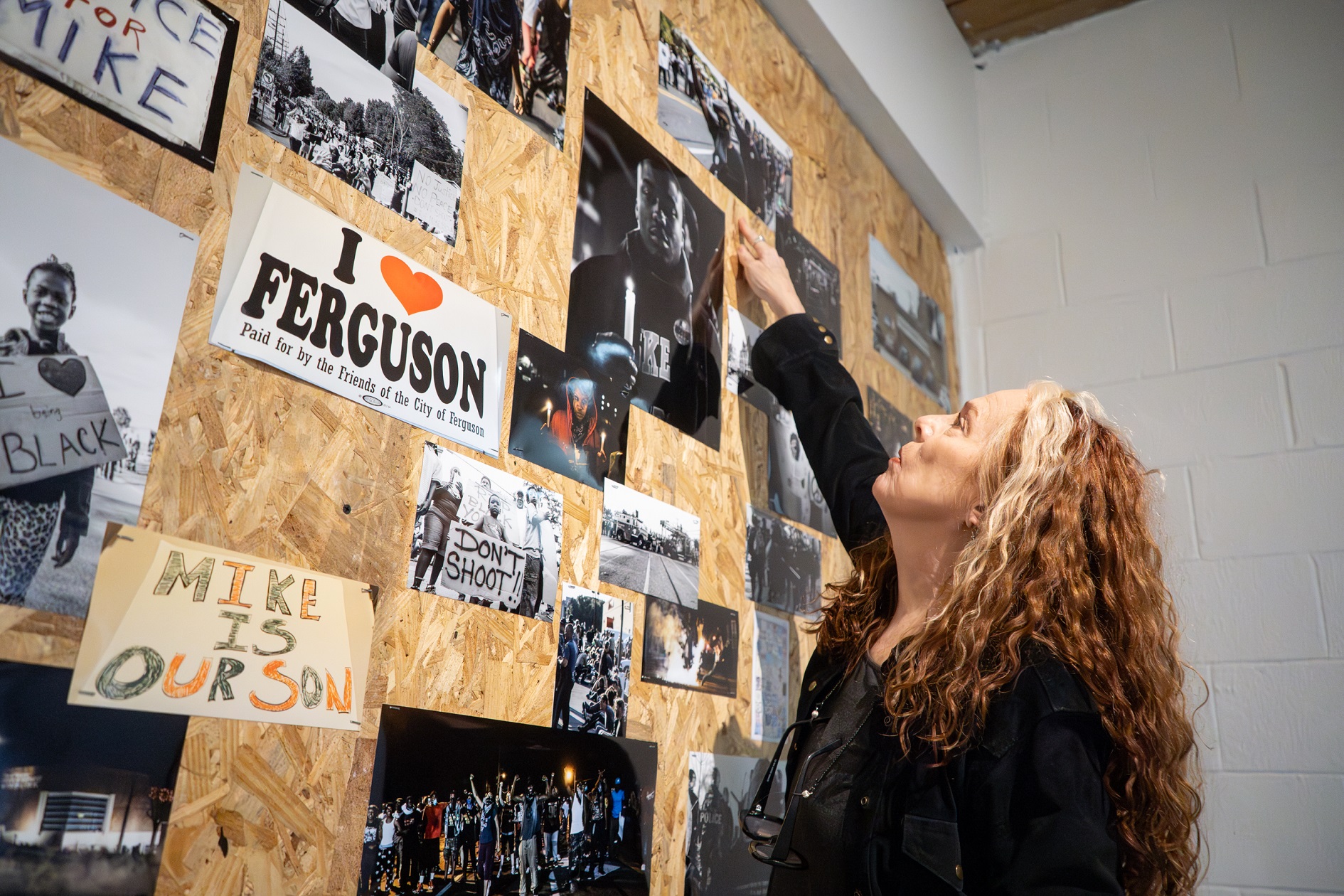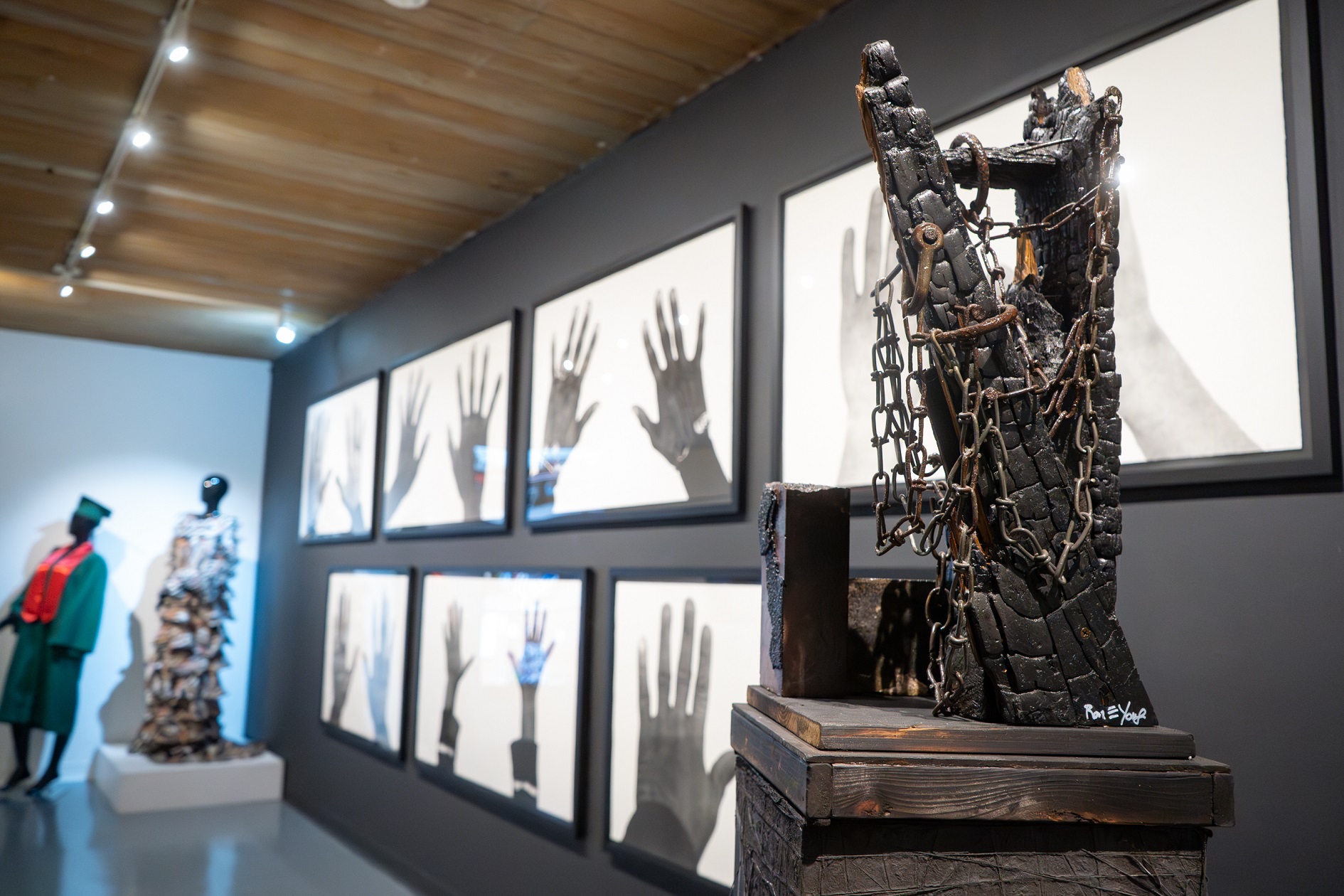It’s been almost 10 years since the Ferguson uprising, the aftermath of the August 2014 killing of Michael Brown, an unarmed Black teenager who was shot dead by a white police officer in the North St. Louis suburb.

A new exhibition, “Ferguson and Beyond: Artistic Responses to a Decade of Social Upheaval 2014-2024,” addresses the ensuing response of artists in St. Louis and from around the world in the years following Brown’s death. The exhibit opens March 22 and runs through April 26 at the Hunt Gallery on the campus of Webster University.
Curator Terri Reilly, a professor in the Department of Art, Design and Art History at Webster, conceived the idea for the exhibit in December 2022. She says choosing “Ferguson and Beyond” as the title was deliberate.
“The word ‘Ferguson’ has become emblematic of a broad initiative for social justice reform across the United States, calling out systemic racism, excessive use of force by police, the urgent need for changes in policing practices and criminal justice reform,” Reilly said, noting the second half of the title – and Beyond – is also intentional, as the exhibit captures individual and cultural histories in the 10 years since.
In her research and in planning and collaborating with others for the exhibit, Riley explains she was guided by two questions: First, what have been the artistic responses brought forth by the events in Ferguson? Second, could this decade be marked as an artistic period defined in historical terms, such as the Black Arts Movement that began in the 1960s?
“The parallels here are interesting,” Reilly said. “The ‘60s were marked by social upheaval – civil rights, students protesting against the Vietnam War, women demanding equality, the LGBTQ+ community beginning to fight back, legally armed Black Panthers patrolling the streets to protect their communities, and Black Power seeing its start. The social upheaval following Ferguson is reminiscent of the 1960s, with renewed consciousness around social justice issues.”

Reilly says through the Ferguson uprising – just like it was in the ‘60s and every period of history, regardless of place – artists were a critical part of the fight.
“Artists have played a pivotal role in shaping the public discourse through their work, mirroring what they witness and more importantly, what they experience,” she said. “The work you’ll see in the exhibit is an embodiment of all of this.”
The exhibit showcases painting, sculpture, video and poetry from artists of color across the St. Louis region and beyond. Among those participating is local visual artist Lillian Gardner.
“Preparing for this exhibition was such a therapeutic experience and allowed me to release this cluster of emotions pressing so heavily on my heart and mind,” Gardner said. “This exhibition is important to me because art acknowledges humanity. Art ignites our desire to share our light as individuals, it lets us discover unity and drives us together. The power of creating and sharing with your community and finding strength and joy through that is truly unmatched.”
Along with St. Louis filmmaker William Morris, Gardner serves as artist-curator for “Ferguson and Beyond.” Two of Gardner’s acrylic-on-canvas works, a painting titled “Dreams” and a diptych, “Jupiter,” are featured in the exhibit.
“I don’t want to give away too much but [the] pieces include a figure of color,” Gardner said. “In my past work, you would find the human figure absent. However, over the years I began to feel like social media has played a huge part in erasing our humanity.”
Gardner wrote a poem, “An Ode to Humanity,” to address not only what happened in Ferguson, but also past and present injustices. Gardner says the poetic reflection, along with social movements like Black Lives Matter and #SayHerName, pushed her to reincorporate the figure into her work.
“A name shifts everything, it recognizes and respects us as individuals,” Gardner said. “A name is the light that cuts through all the iniquity and dehumanization, it represents a life, forever.”
The exhibition also acknowledges the role expressive arts play in healing from trauma, especially trauma in marginalized communities, Reilly notes.
“The work in the show is extremely challenging – it deals with the death of Black and brown people,” Reilly said. “Death is never easy, but an unjust death is very, very challenging … the trauma is real and continuing.”
As an artist, Gardner says her experience with using art to heal from traumatic events has been a constant and an ongoing journey of growth.
“I flow through various art forms,” she said. “Each one offers different ways for me to process life and move through the world. Art is a call to action. Art is an invitation to get to know yourself better and the world around you. Art is not only my love language but the way I communicate. When I create, one of the most important things to me is finding understanding through vulnerability, openness, honesty, love, self-love, grace for myself and trust. Whichever art form that speaks to me deeply, I tap into that and surrender to the process – mind, body and soul.”

In Reilly’s view, no one can walk in and walk out of the exhibit unaffected.
“Injustices still exist. Injustice has no boundaries,” she said. “There is no cure for racism, sexism, homophobia, but how can we somehow continue to fight the good fight? We can’t turn a blind eye – no one can.”
In addition to Gardner and Morris, featured artists for “Ferguson and Beyond” include Dannie Boyd, Damon Davis, Cheeraz Gormon, Jon Henry, Mallory Rukhsana Nezam, Yvonne Osei, Hank Willis Thomas and Ronald Young. Poetry from DuEwa Frazier, Jacqui Germain, Aya de León, Jason Vasser-Elong and Gormon, as well as images of the Ferguson uprising from the Missouri Historical Society’s collection, will also accompany the exhibition.
An opening reception will be held at the Hunt Gallery on Friday, March 22, from 5:30 to 8 p.m. The event will feature remarks from Brown’s father and stepmother, Michael Sr. and Cal Brown, and Ferguson Mayor Ella Jones.





